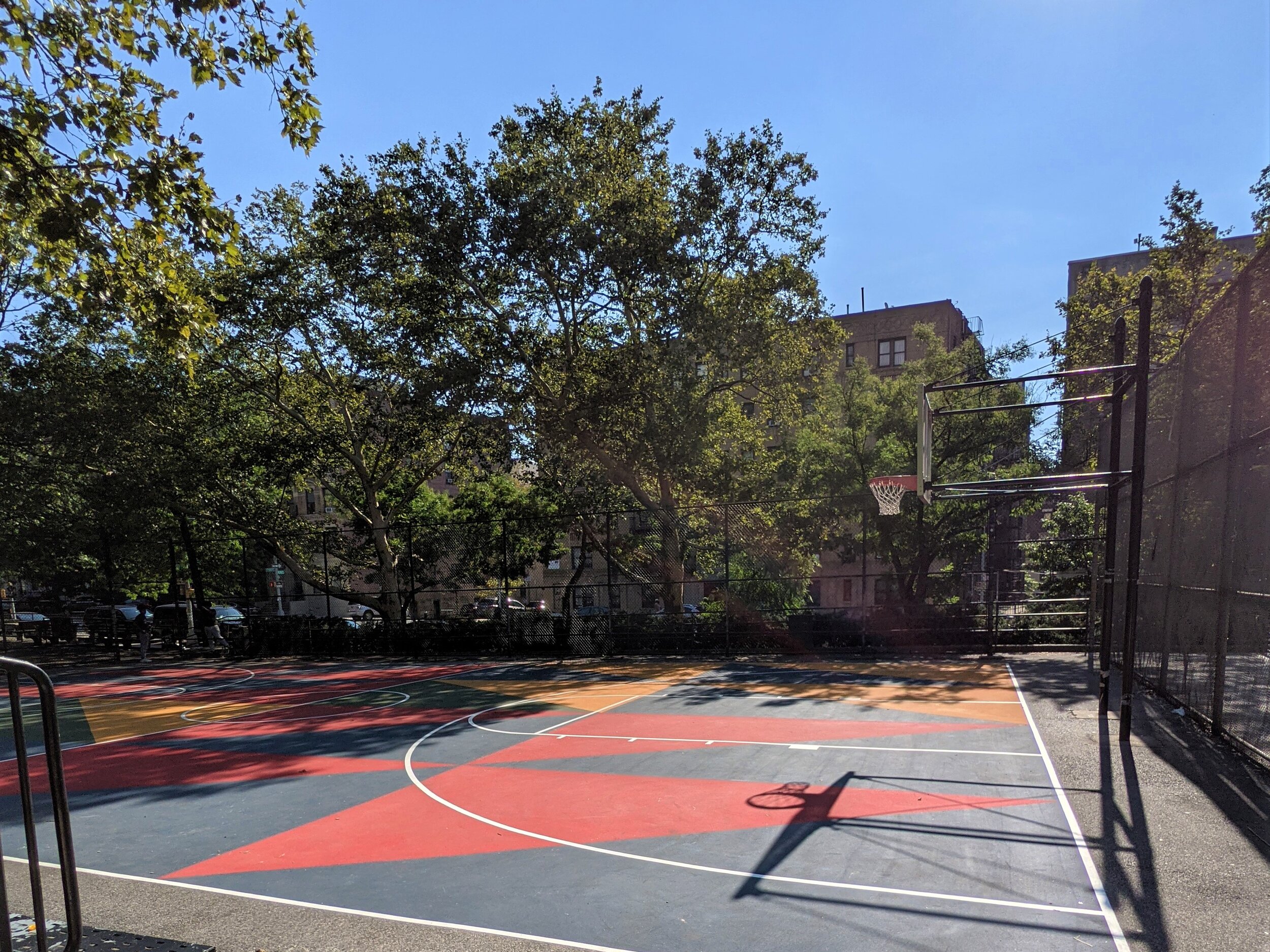Throughout New York City, permanent monuments grace sidewalks, street corners, and parks. Many of those monuments commemorate important events, influential people, and well-known heroes. Some, however, stand in tribute to everyday New Yorkers. Judith Weller’s “The Garment Worker” is one such statue, depicting a man in a yarmulke working at an old-fashioned sewing machine. Weller, originally from Israel, based the figure on memories of her father, a machine operator in the garment industry, similarly bent over a sewing machine hard at work. Jewish immigrants like the man depicted in the statue have a long and storied history in New York, with the first wave of them arriving as early as the 1650s. A few centuries later, from about the 1880s to the 1920s, the Jewish population in New York City boomed, growing by nearly 1 million in just a few decades. Many of these new arrivals ended up working in New York City’s prosperous garment industry, at one point making up a large majority of the labor force in that field. “The Garment Worker” sits at his table on 7th Avenue, a larger-than-life homage to the Jewish garment workers who made up “the backbone of Jewish life in New York at the turn of the century,” and the immigrants who shaped New York City.
Ascending the Mountain by Susan Stair
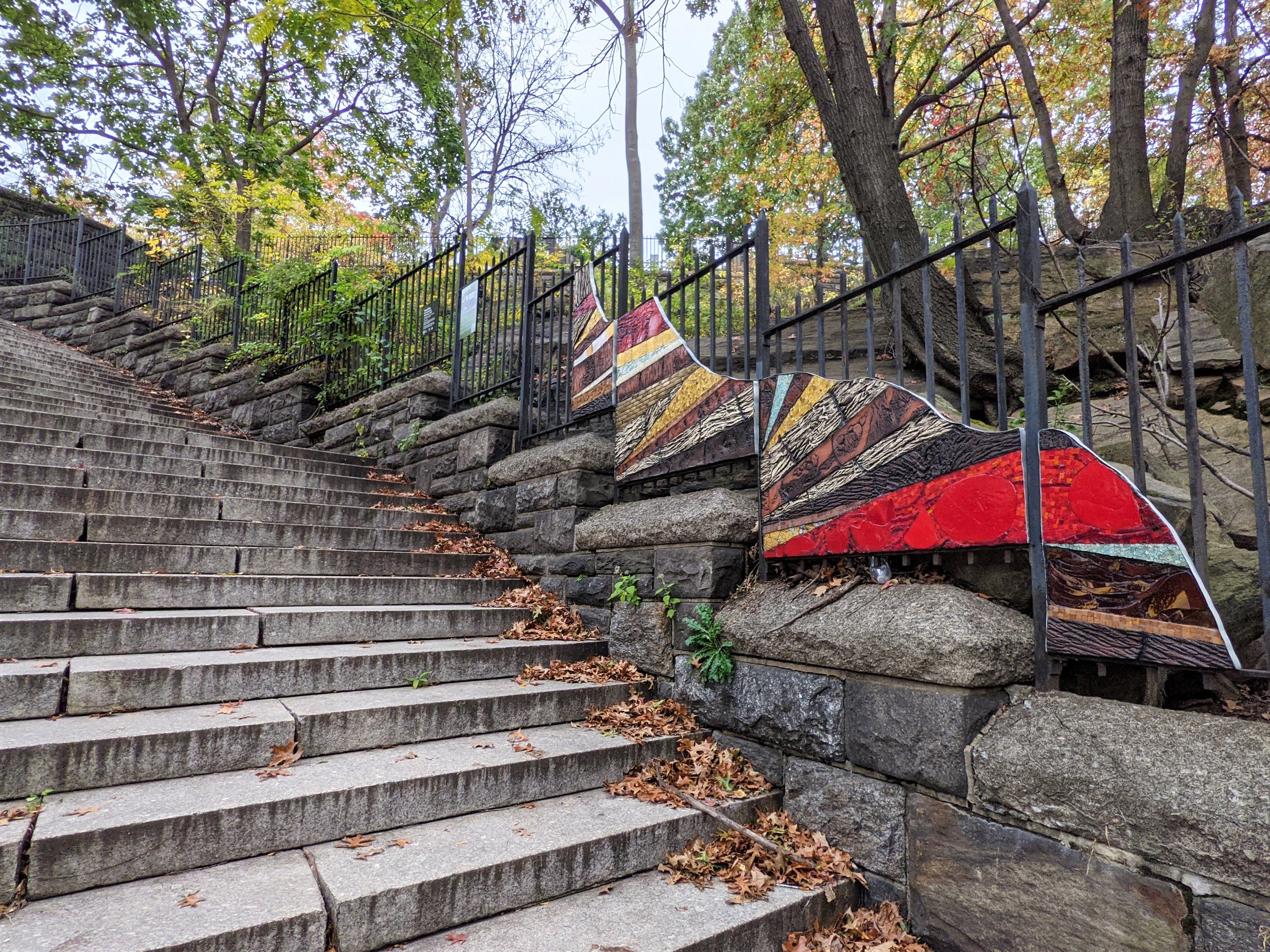
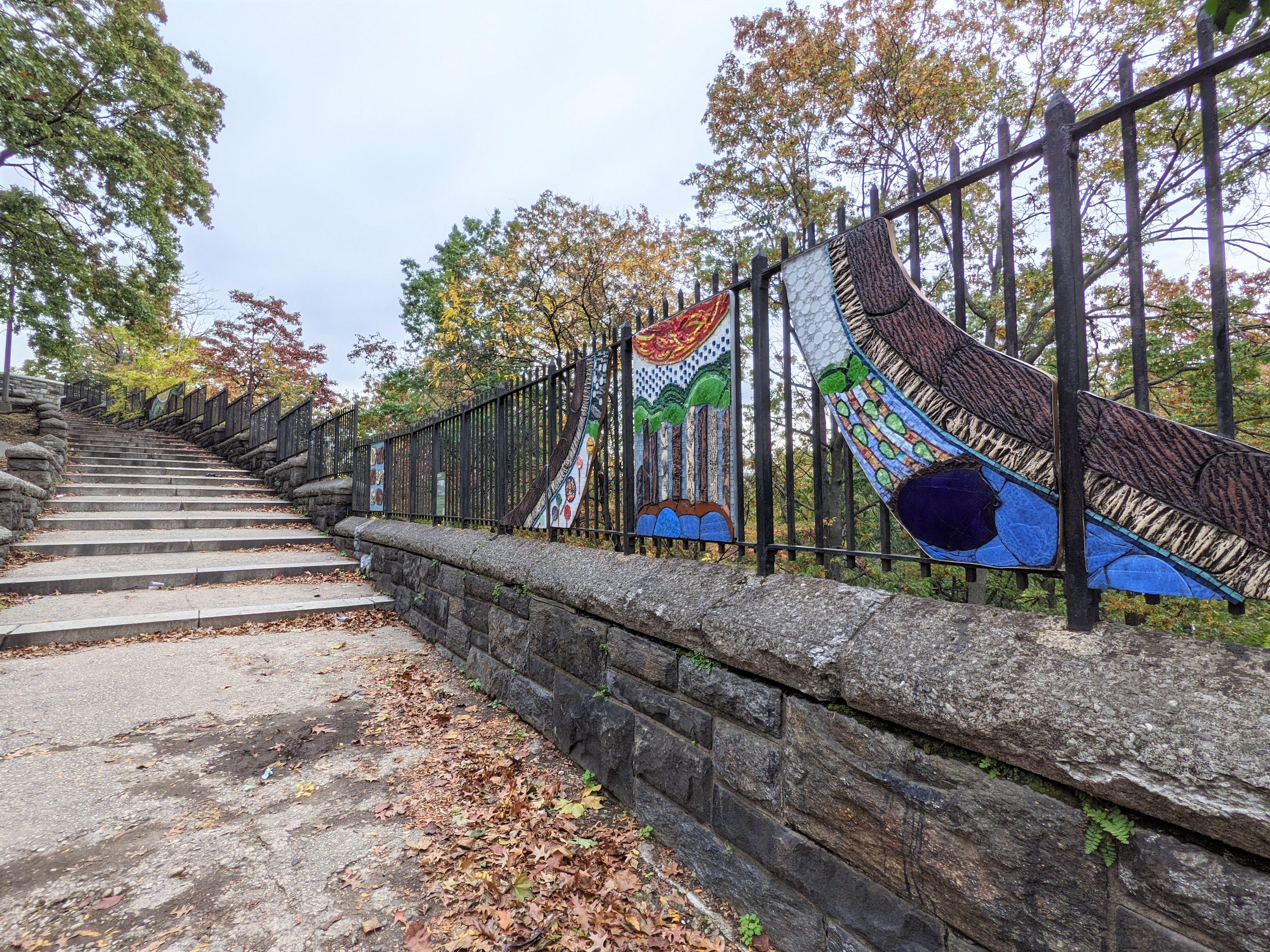
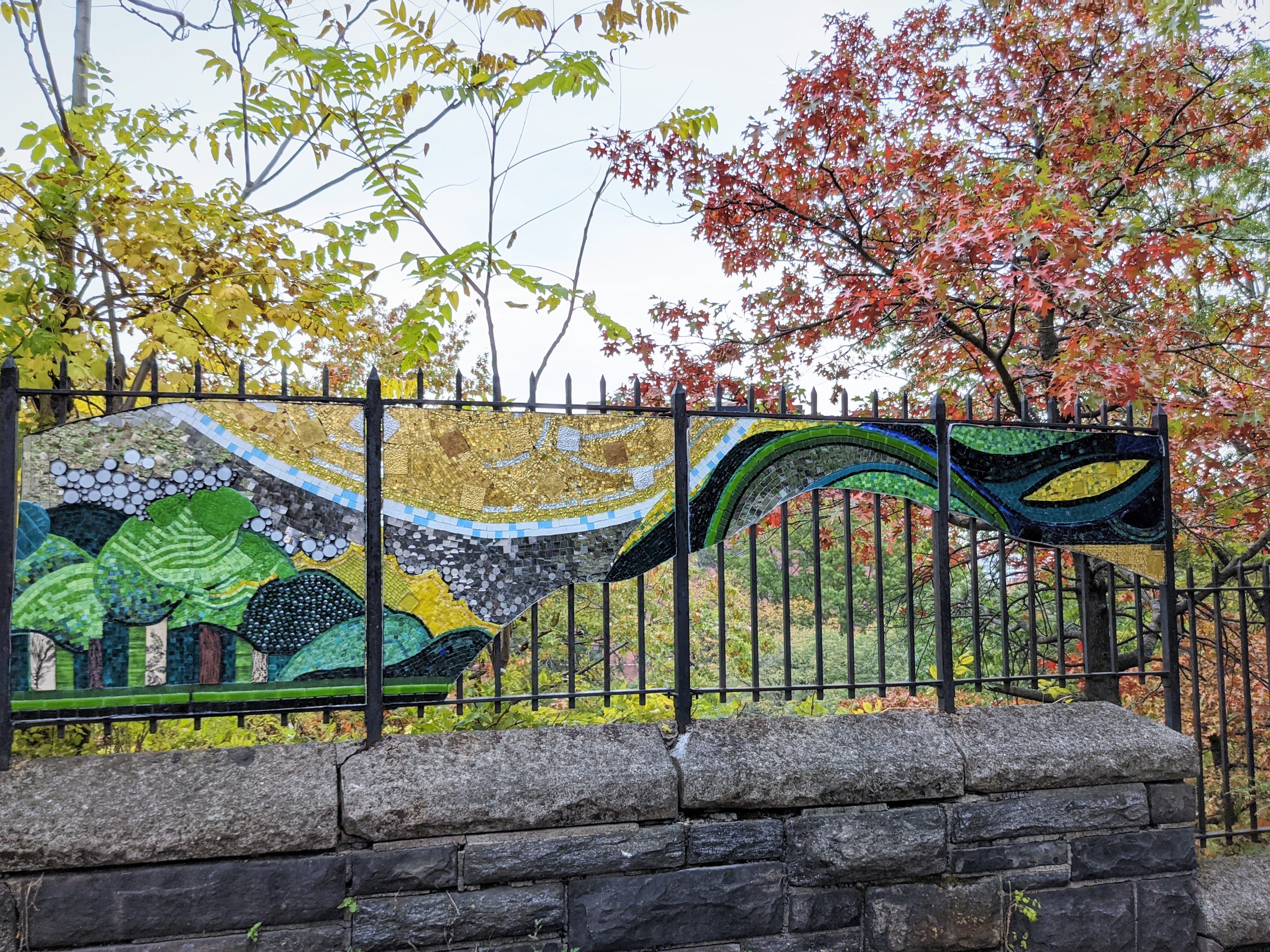

At the center of Harlem’s Marcus Garvey Park is a small, rocky mountain covered with trees. It wasn’t always so verdant, though. Less than 100 years ago, the mountain was mostly bare rock, but over time, trees that were planted at the beginning of the twentieth century grew through the solid Manhattan Schist. Today, the entire park is shaded with trees. “Ascending the Mountain” is a three-part installation by artist Susan Stair, created as a tribute to this urban forest and the trees that make it up. The first part of the work, called “Roots in Rock,” is at the bottom of the mountain, visible from the first step of the staircase that leads to the top. You can look through the artwork, you can see the actual roots of the trees anchored in the rocky ground. The next part of the work, “Growing Powerhouse,” is a bit higher up on the winding stairs. This piece “illustrates the trees’ ability to bring gallons of water and minerals up the side of the mountain through their trunks.” The upright shapes of this portion echo the tree trunks and branches visible through the fence behind them. The final part is at the top of the staircase, near the highest point in the park. The flowing greens and golds of “Tree Canopy” look like an extension of the leafy treetops behind it. Looking out from the top of mountain, you can see out across the small forest and into the urban landscape beyond, offering a rare and wonderful perspective on the city and its relationship to nature.
Plastic Fantastic! by Capucine Bourcart
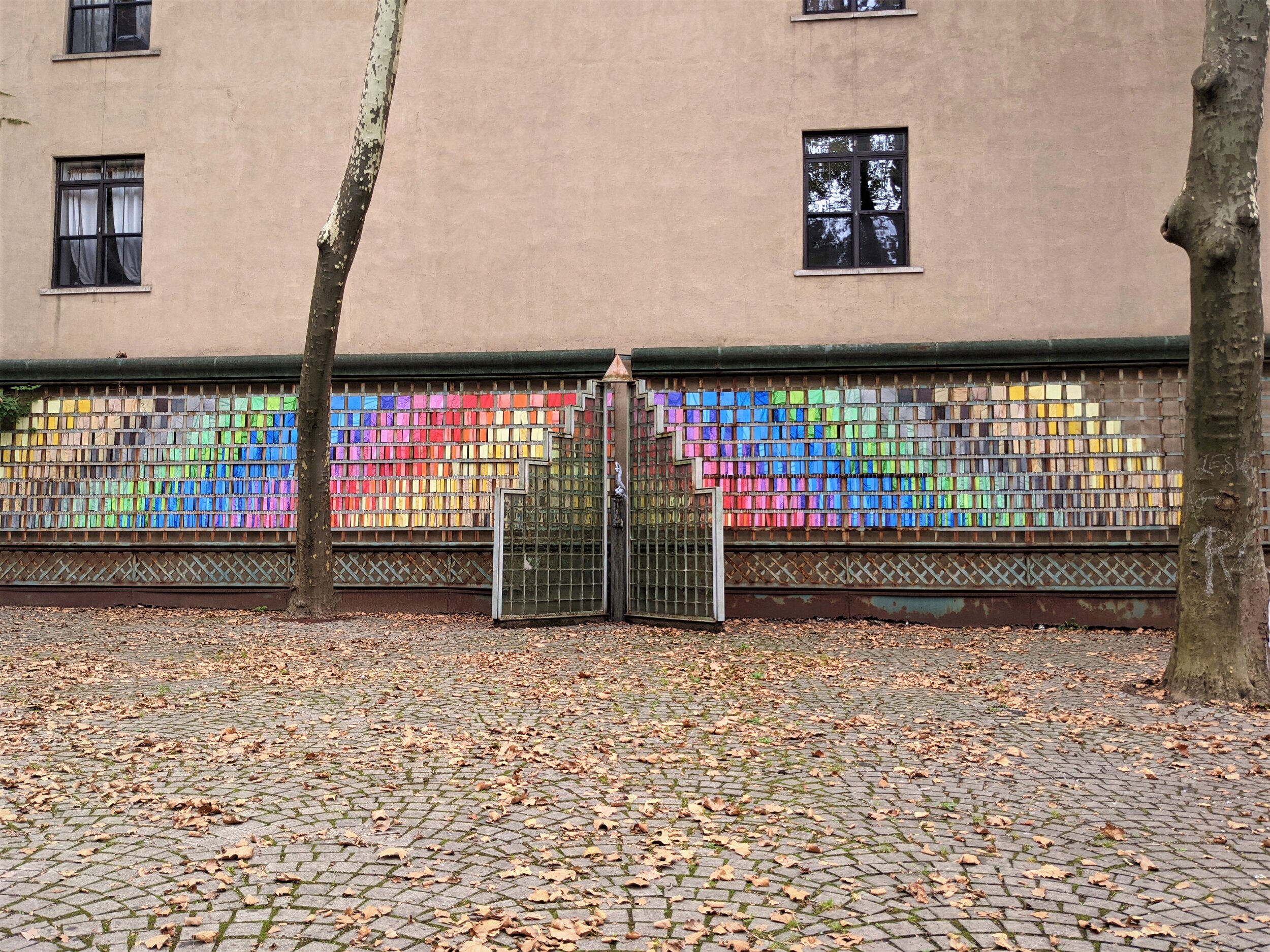
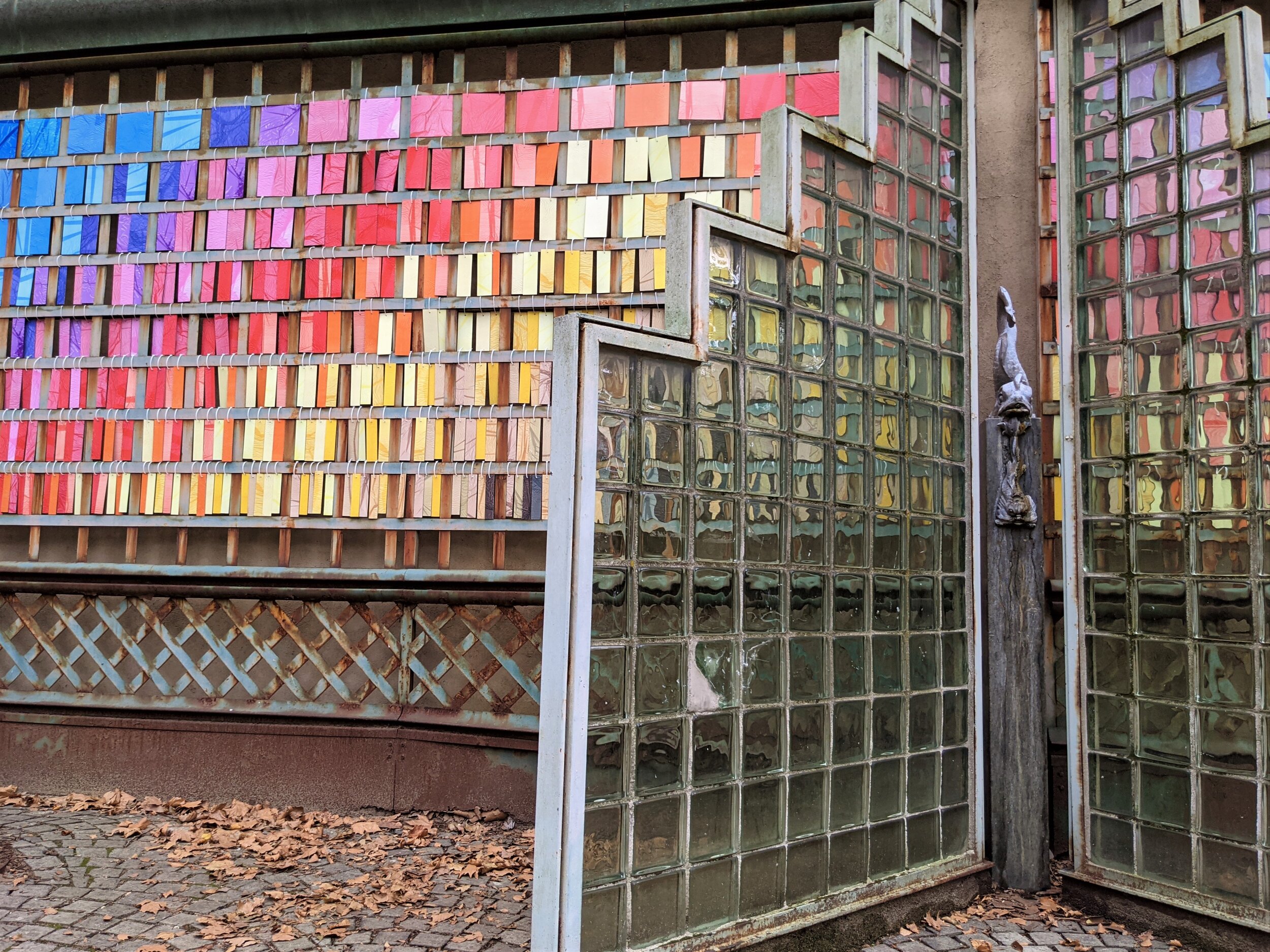
Last year, New York enacted a law banning single-use plastic bags in an attempt to reduce waste and pollution in a state where over 23 billion plastic bags have typically been used every year. Artist Capucine Bourcart has long been fascinated with single-use plastic bags as a symbol of both waste and consumerism. Her newest work, “Plastic Fantastic!,” on display in Harlem Art Park, is a large-scale consideration of these items. Consisting of about 1600 small pieces of colorful aluminum sheeting, the work spans 66 feet across one side of the small park. Each piece is printed with a close-up image of a plastic bag, which the artist collected from friends and neighbors over several years. The colored blocks are woven into the existing metal trellis in the park, creating a rainbow gradient that catches your eye immediately. The wide span of the work illustrates the far-reaching effects of single-use plastics on the environment. Bourcart seems to ask, now that plastic bags are banned in New York, how much of this environmental harm will be mitigated?
Eros in London
Anyone who has ever visited London’s Piccadilly Circus is familiar with the winged statue of Eros, the mischievous Greek god of love, who watches over the popular public space. The statue, designed by English sculptor Alfred Gilbert, sits atop the Shaftesbury Memorial Fountain, a tribute to the politician and philanthropist, the 7th Earl of Shaftesbury. A statue of the god of sensual love seems a strange tribute to such a sober figure. And it would be, because the statue is actually (probably) meant to depict Eros’ brother, Anteros, the god of requited love. Gilbert described Anteros as representative of “reflective and mature love, as opposed to Eros or Cupid, the frivolous tyrant.” Interestingly, the true identity of the figure is a subject of significant debate. Some will claim that Gilbert only called the statue Anteros after receiving criticism from Victorian moralists, scandalized by a nude sculpture displayed in public. In fact, it is due to these very critics that the statue has a third name: “The Angel of Christian Charity.” No matter what you call it, the beautiful statue is an iconic fixture of Piccadilly Circus.
CowParade
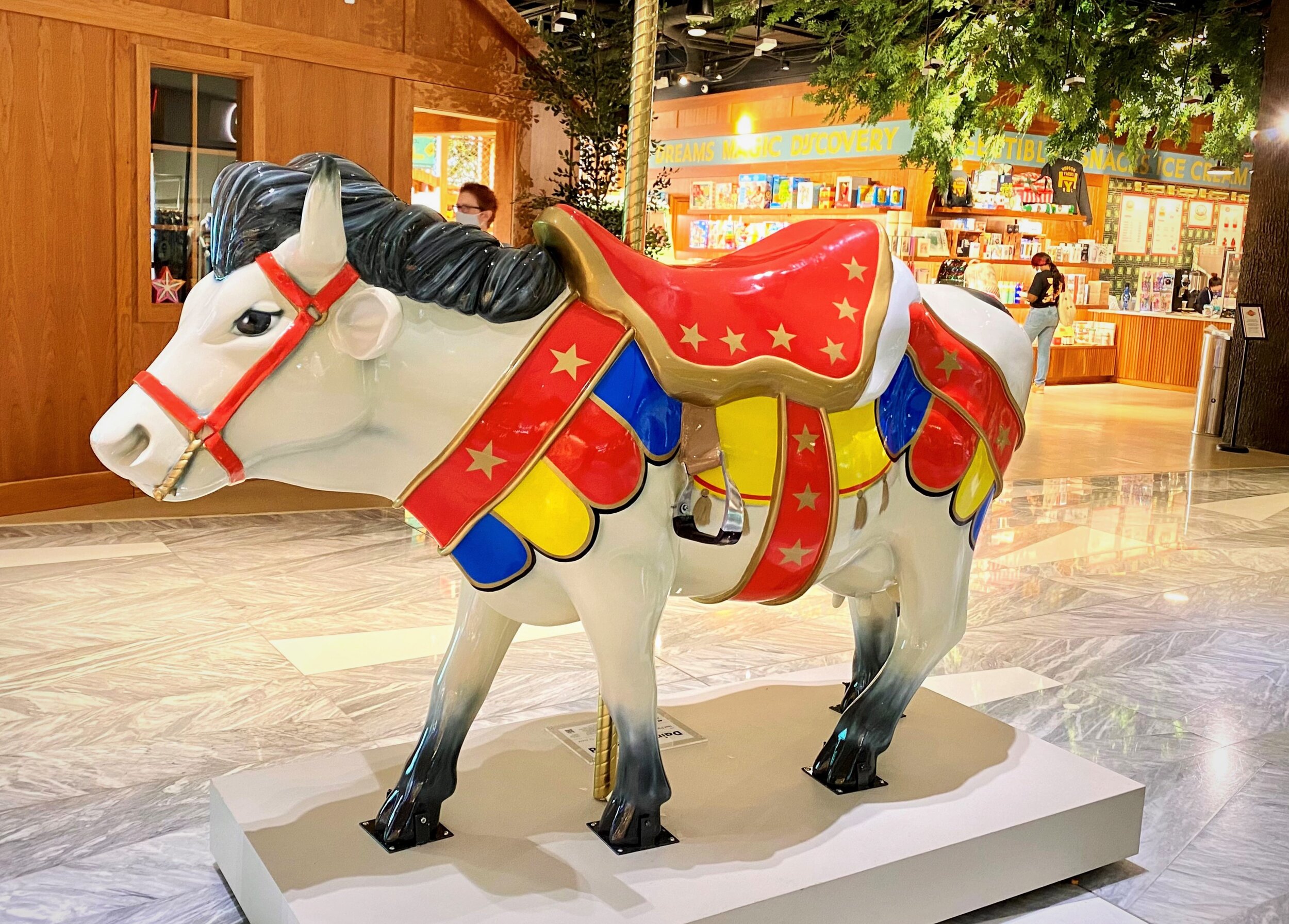



New York has become a pasture for cows! Not real cows, of course, but 78 unique fiberglass cows are on view throughout New York City. Each of the cows is painted and transformed by a wide array of artists, “from contemporary art icons to well-known Wynwood graffiti artists to eclectic designers and celebrity supporters.” We found a few of the cows around the city, including “Dairy-go-Round” designed by actor Neil Patrick Harris, “Flora, the Sustainable Cow Planter” by Brian McCarthy, “E Pluribus Unum” by Yannick Lowery, “Moo York Summer Celebration” by Billy the Artist, “Creature Cow Alliance” by Danny Cole, and “CLEAR Constellations” by Chris Sainato. At the end of the exhibition, each of the cows will be auctioned off, with the proceeds going to the meal delivery service God’s Love We Deliver, which serves medically-tailored meals to sick or otherwise homebound New Yorkers. CowParade, the organization that put together this herd, has held similar events in over 80 cities around the world over more than 20 years. This is the first time the cows have been in New York since 2000.
Project Backboard in St. Nicholas Park
Almost every New York City park has at least one basketball court. They are ubiquitous in this city, a beloved space to enjoy time outdoors with friends and family. The courts in my neighborhood are in St. Nicholas Park, a stretch of parkland that runs from 127th Street to 141st Street, forming a green haven for residents of West Harlem. At almost any time of day, the basketball courts in St. Nicholas Park are full of kids practicing their skills, teenagers playing pickup games, or families enjoying the sunshine and exercise. One of my neighborhood courts recently got a makeover courtesy of an initiative called Project Backboard. This organization works with artists to repaint public basketball courts all over the country, installing colorful works of art “in order to strengthen communities, improve park safety, encourage multi-generational play, and inspire people to think more critically and creatively about their environment.” The St. Nicholas basketball court was designed by artist and Harlem native Faith Ringgold, a prolific multimedia artist best known for creating narrative quilts. The court design is based on her 1974 work “Windows of the Wedding #1: Woman.” The large-scale version of the work is an abstract, colorful pattern which “will be transformed into something of living narrative quilt” as countless stories play out on top of the painted surface.
Re:Growth at Riverside Park
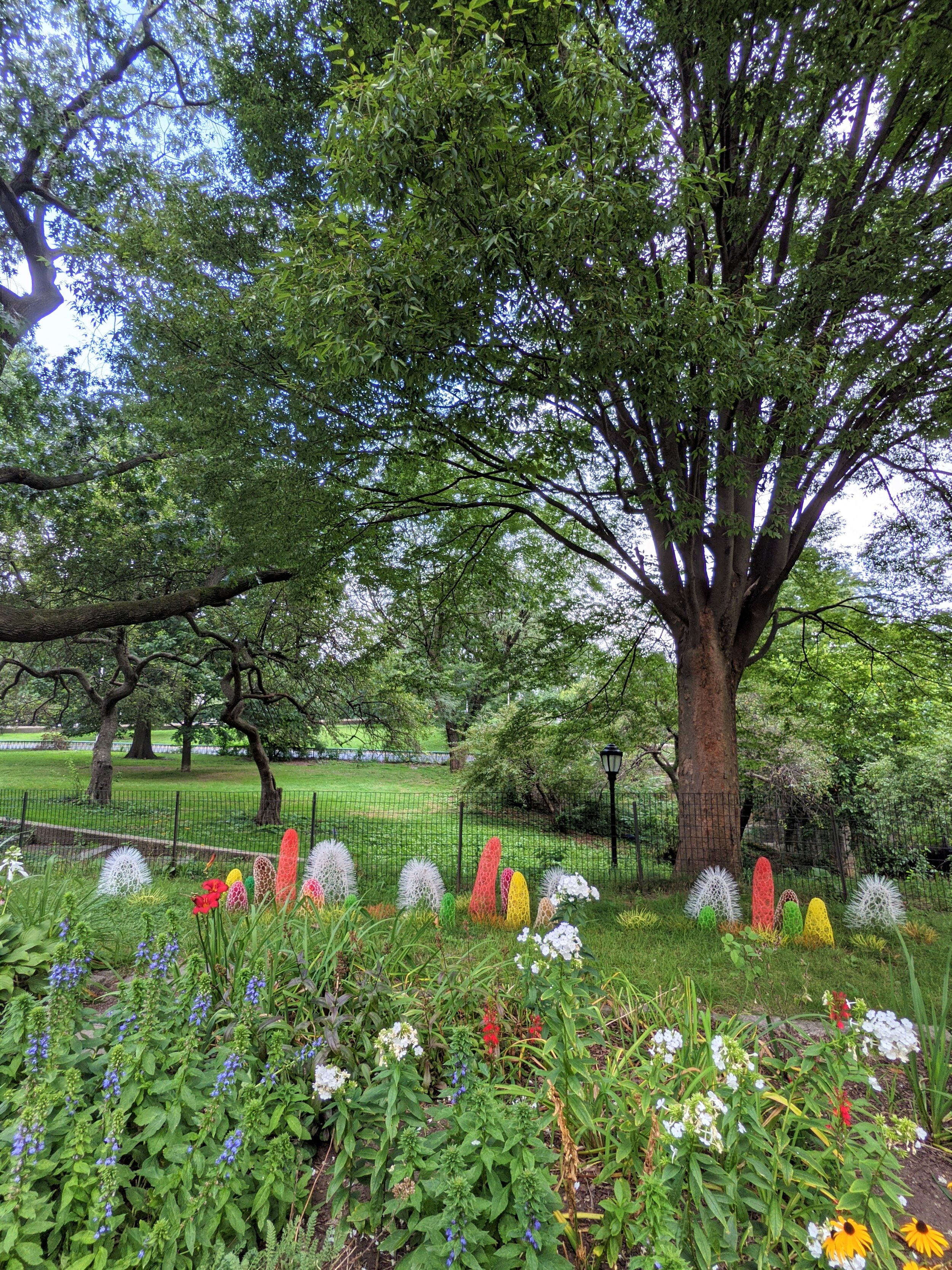
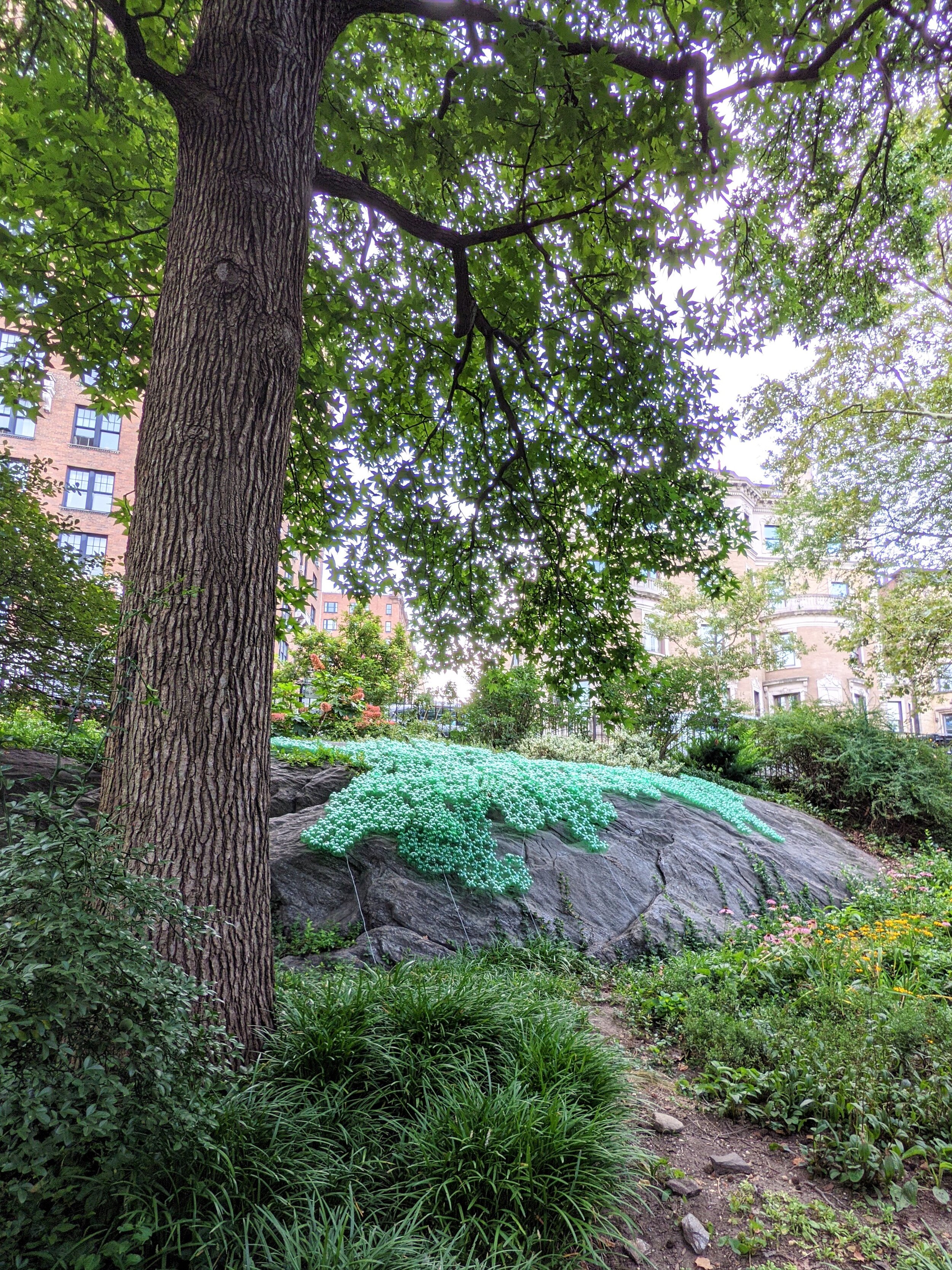
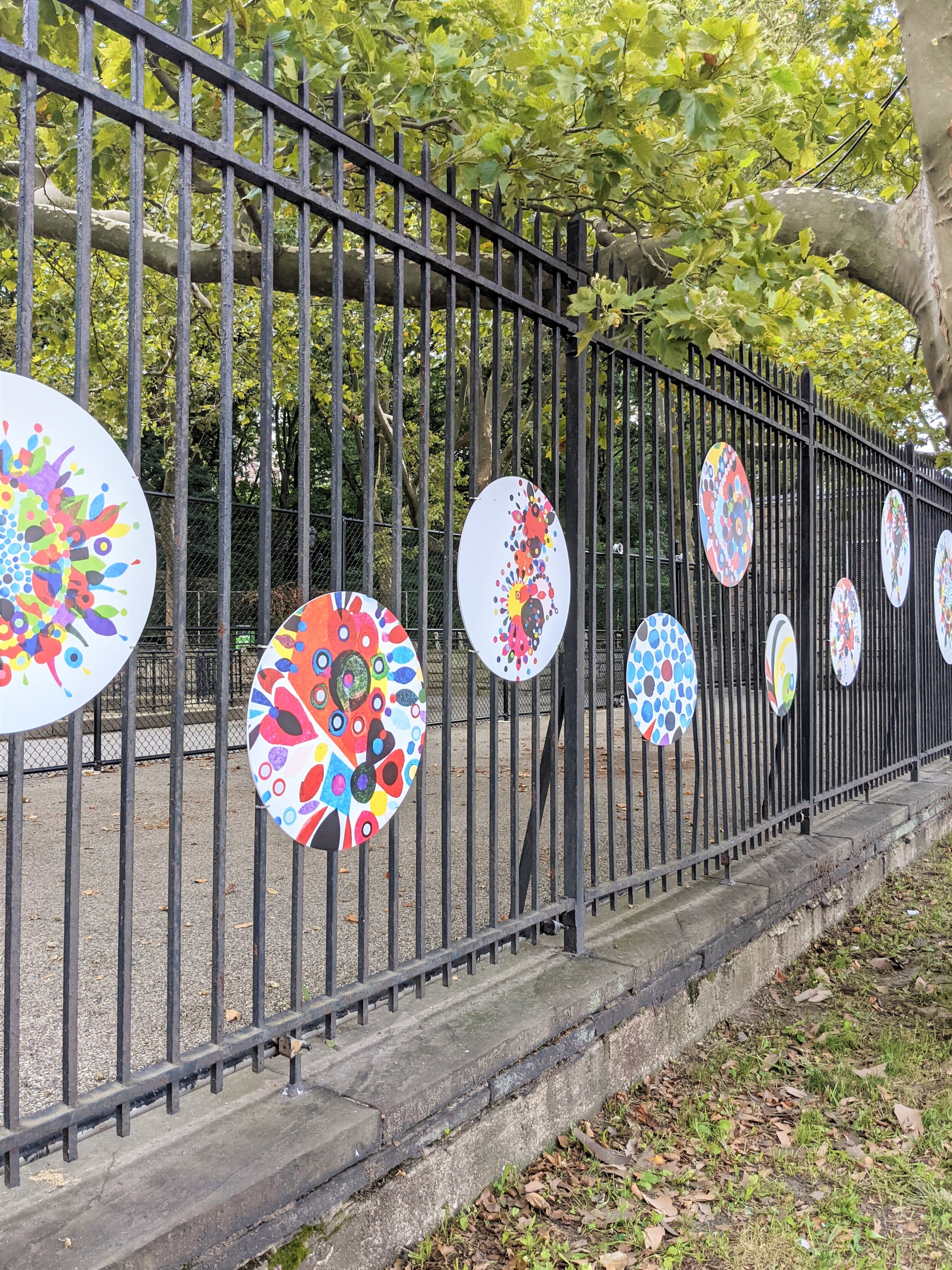
Riverside Park stretches along the western edge of Manhattan from 59th Street to 158th Street, a span of about four miles. It is an open secret that Riverside is the best park in the borough for running, biking, and relaxing by the water. This makes it the perfect location for a new public art exhibition, Re:Growth, A Celebration of Art, Riverside Park, and the New York Spirit. There are works of art scattered around the park, so as you explore Manhattan’s northwestern shoreline, you’re bound to come across work from at least one of the more than 20 artists represented in the event. I took a walk in the park and stumbled upon “Summer Vibe” by Sui Park, “Invasives” by Jean Shin, and “Happiness Is…” by Blanka Amezkua. Re:Growth feels like visiting a gallery, but it’s outside in the warm summer air, with the smell of saltwater all around you. It represents a safe way to experience art as we work through the uncertainties of the pandemic.
Reclining Liberty by Zaq Landsberg
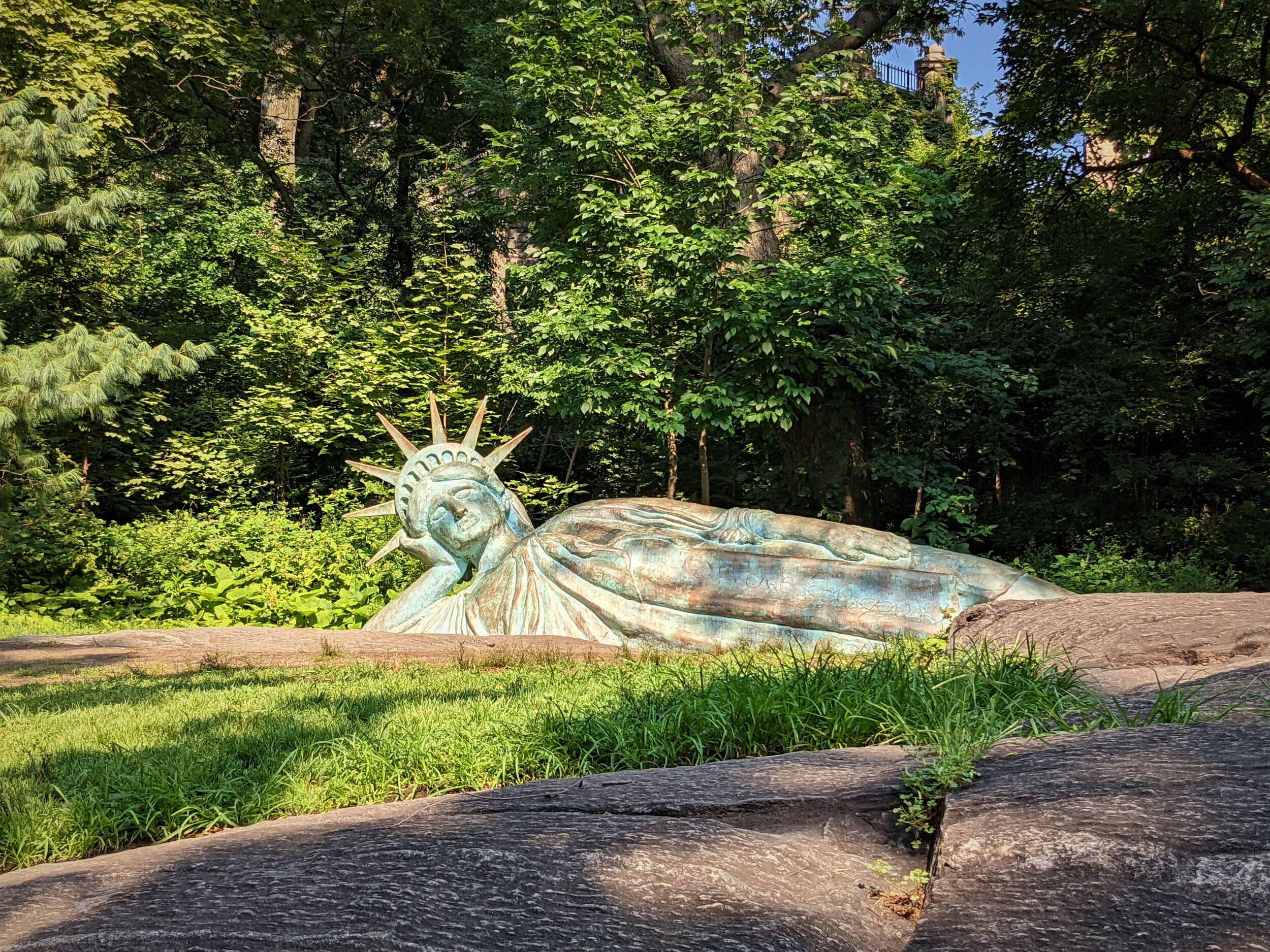
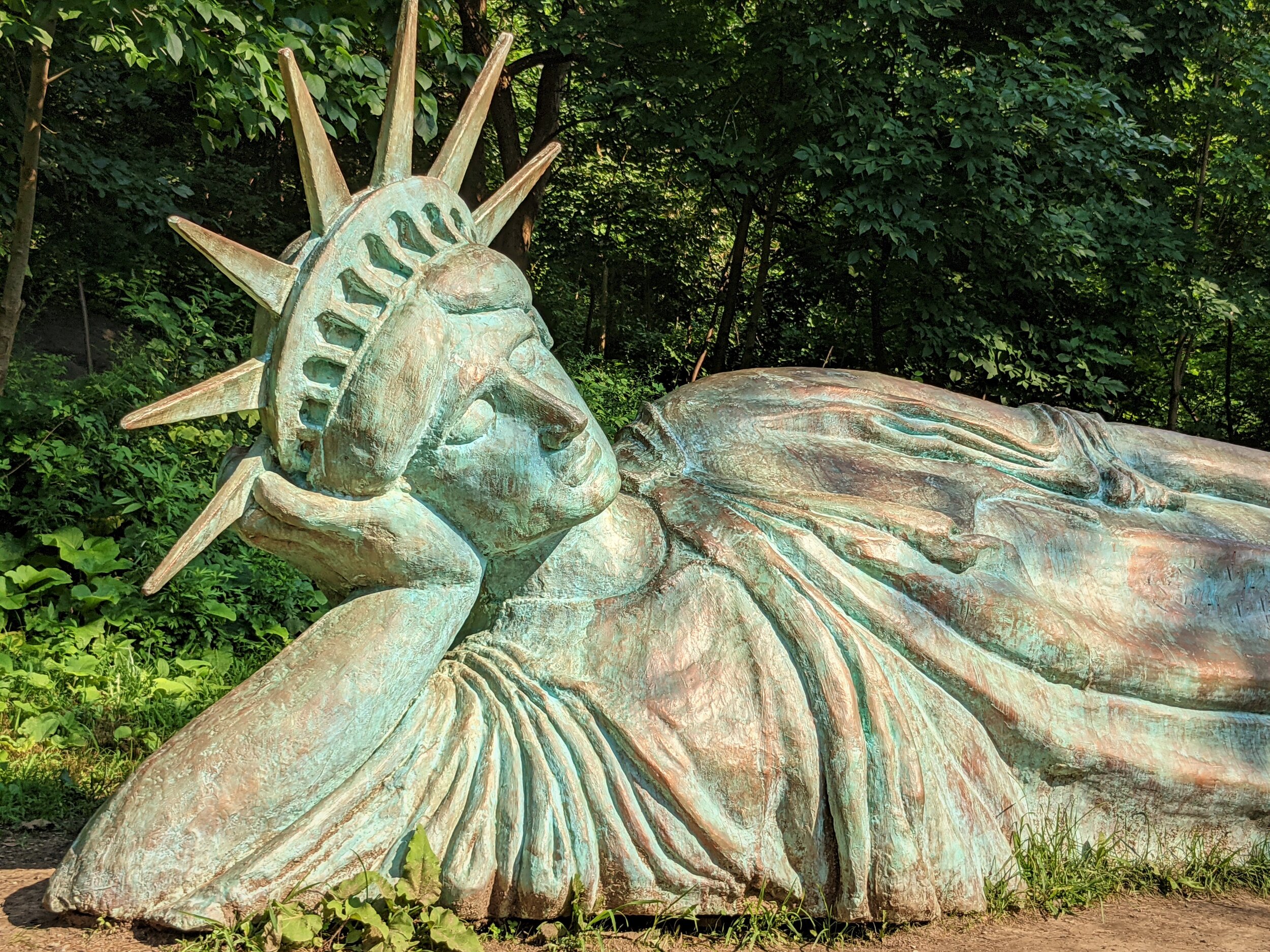
Tucked against a stand of trees at the top of a hill in Morningside Park is an unusual sight: the Statue of Liberty taking a rest. Artist Zaq Landsberg’s “Reclining Liberty” is a massive musing on the state of American ideals. The Statue of Liberty is a classic New York symbol, standing proudly in New York Bay to welcome visitors and immigrants to the United States. But in Landsberg’s version, she seems tired, taking a pose inspired by the Reclining Buddha, meant to depict the Buddha in his last moments of life. The pose has a hopeful connotation, however, as it can be understood to represent the last step on a path towards enlightenment. With this work, Landsberg is questioning whether Lady Liberty, or indeed if the US is “an entity forever upright and tall, is it an eventual decline and fall, or is there another stage for the country that will transcend this symbol altogether?" The sculpture manages to be humorous and charming, while provoking serious contemplation about American ideals.
Brighter Days by Melvin Edwards
“Song of the Broken Chains” by Melvin Edwards
Legendary sculptor Melvin Edwards has spent his 50-year long career creating public art for display all over the world. He is currently being honored with a retrospective collection in front of City Hall in Manhattan, featuring several sculptures created between 1970 and 1996, and one new work, commissioned in 2020. Titled “Song of the Broken Chains,” this new sculpture consists of several enormous chain links, broken open and glittering in the sunlight. All of the sculptures in the retrospective include chains in some form, as chains are a signature motif for the artist. In his work, he utilizes the formal qualities of chains—their movement, shape, and weight—while exploring the various metaphorical meanings of the material. In Edwards’ work, chains “can represent bonds that [either] constrain or unite us, while broken fragments might suggest [either] liberation or loss.” Often present in his work is also the clear historical connection to chains “as tools of slavery and violence.” His most recent piece has a sense of optimism, with the broken chain links “suggesting both liberation and rupture,” shining brightly on the site of both a colonial African Burial Ground and New York’s Black Lives Matter protests.
Murals by Kobra
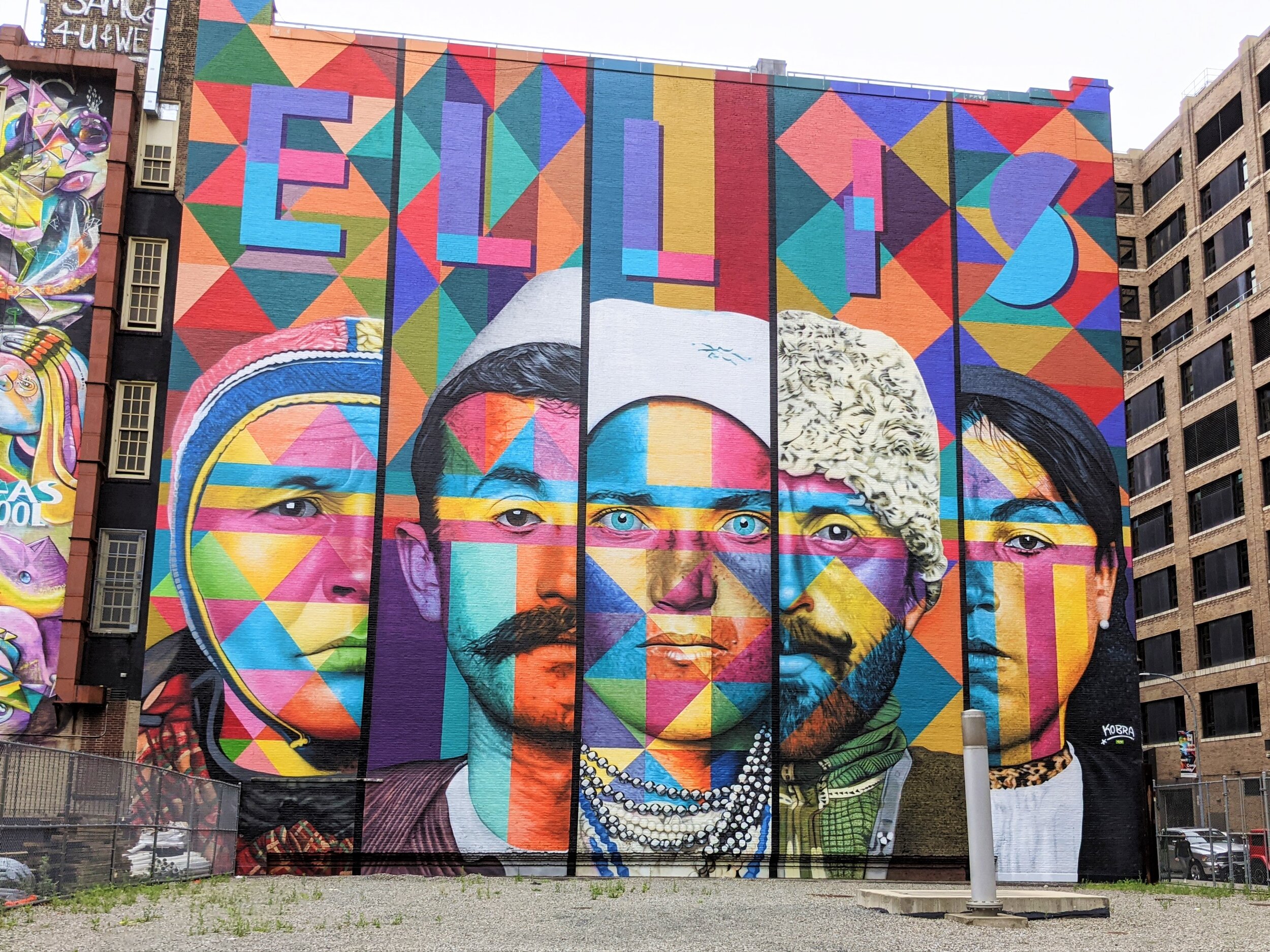
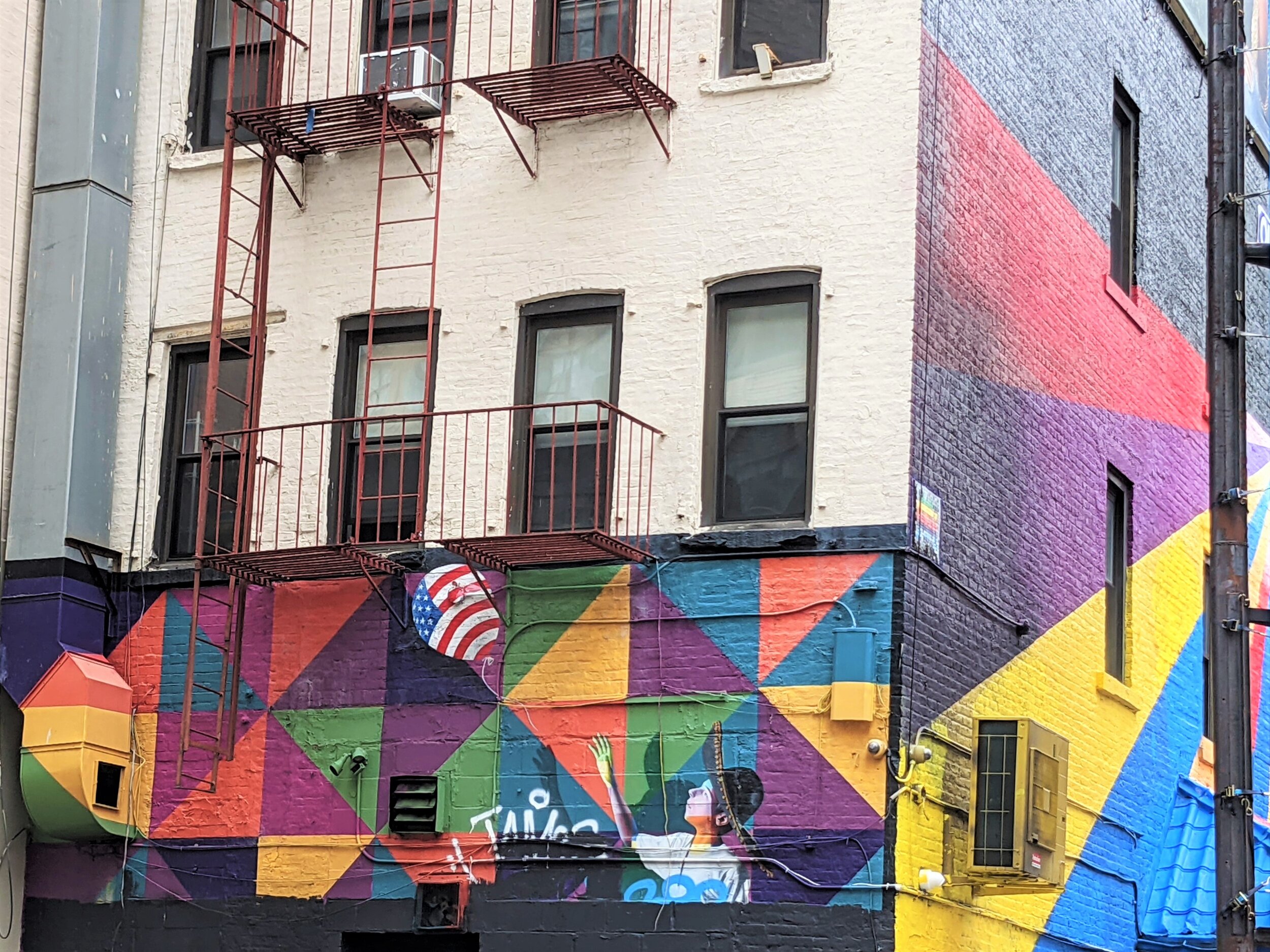
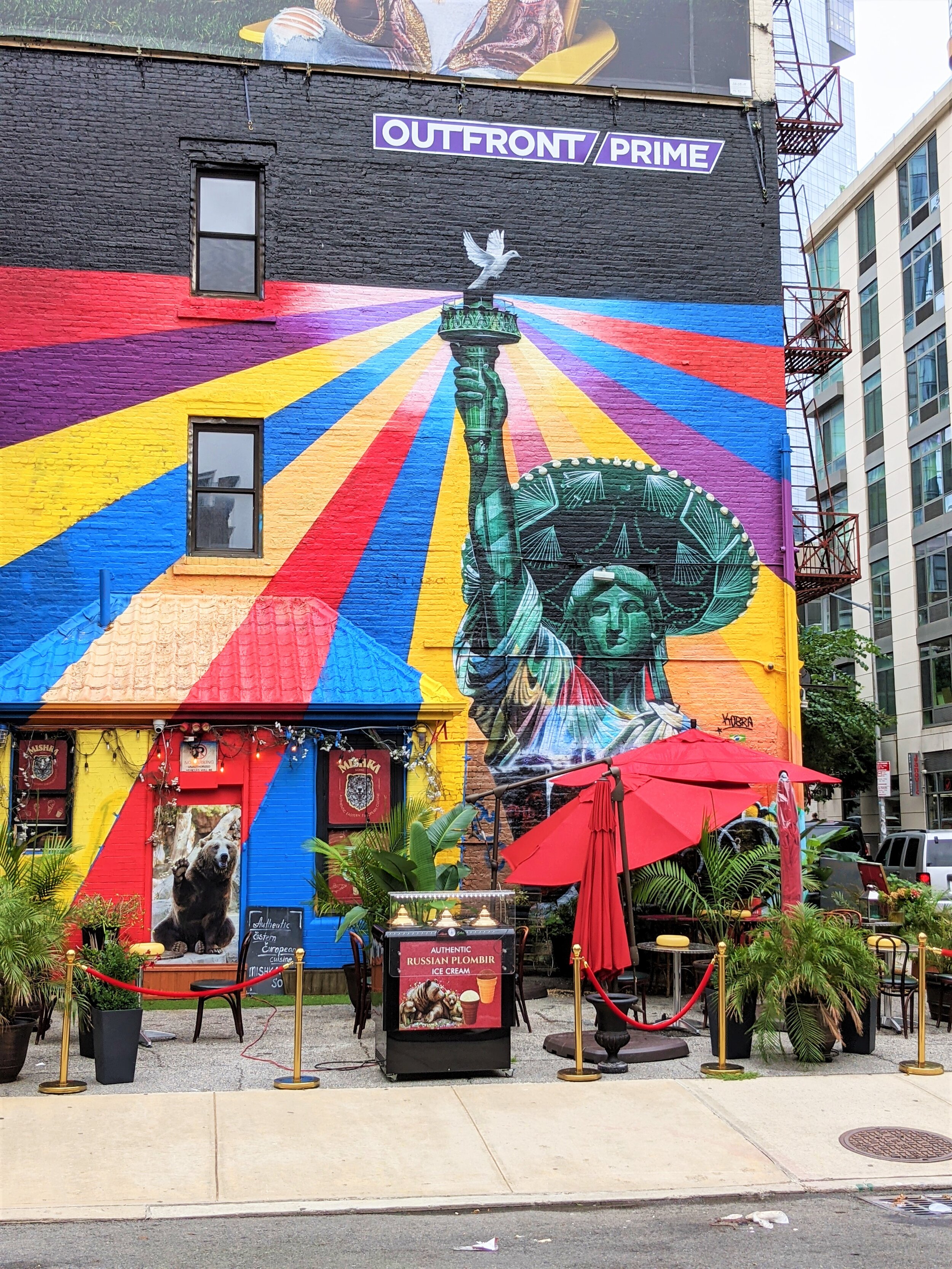
Brazilian street artist Eduardo Kobra, better known simply as Kobra, has painted countless murals over the course of his career, many of which can be found in New York City. He has a distinct style, mixing black and white photorealism with geometric patterns in a rainbow of colors. He often layers color over the grayscale elements, creating figures that can seem simultaneously ghostly and very present. Once you know what to look for, you begin to see his work all over the city, especially in downtown Manhattan. The incredibly prolific artist often deals with social issues in his work, frequently commenting on immigration, race, war, and religion. He is a master of powerful, thought-provoking images that make any street corner more beautiful.



